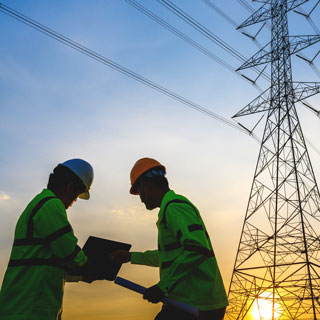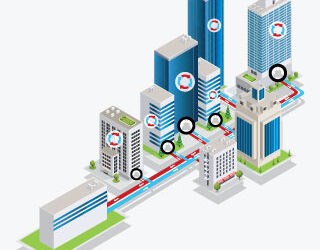Why Indian grid operators need to acknowledge demand flexibility for optimal grid operation

Introduction:
The peak demand levels and electricity consumption of India are yet to peak. The main drivers for this increase in demand levels are the increasing appliance penetration resulting from rising building stock, along with significant uptake of electric vehicles (EVs) and other distributed energy resources (DERs) like solar PV and storage.

Increasing level of DERs will lead to uncertainties in the demand side, which is predominantly volatile. Subsequently, the increasing penetration of variable renewable energy (VRE) sources will result in high degrees of variability from the supply side. Therefore, system operators need to explore various opportunities presented by such changes to address the challenges in the near future.
Electrical systems, due to their inherent characteristics, must be balanced i.e., demand and supply of electricity must be equal across all instances of time. As the supply-demand levels vary interchangeably, there is a need to deploy mechanisms to mitigate the imbalances thereby reducing the risk of grid failures. Power outages can severely affect not only the power sector but also the sectors reliant on electricity for their end-use like manufacturing industries, commercial buildings etc. As such, reduction of grid failures could be directly translated to lower economic impact across all the sectors involved. In this view, demand flexibility becomes a topic of broad discussion globally. The concept that demand could adapt the variability in supply levels is fairly new and requires in-depth research as the legacy electrical grid was largely demand following in its operations.
Defining grid flexibility
Before diving into the topic of demand flexibility, it is imperative to know what grid flexibility pertains to. Grid flexibility can be defined as the ability of the electrical system to adapt itself to the variations in demand and supply and maintain the balance throughout all timescales. System operators need to continuously monitor all the relevant parameters to ensure this balance is not disturbed (beyond a threshold limit). Not adhering to these precursors, the system becomes incapable of maintaining a reliable and secure energy flow which could have severe implications for the grid and could drive the system into emergency states (potential of a blackout!).
How do grid operators maintain this balance across different timescales?
 Figure 1 Supply-Demand balance
Figure 1 Supply-Demand balance
Power plants, based on their operation, can be categorised into baseload plants and peak load plants. System operators need to ensure the economic and reliable operation through careful planning of baseload and peak load plants. Coal and Nuclear plants, being inflexible in their operation, are generally considered as the baseload plants. While Gas and Hydro generation, having greater abilities of flexible operation are used as peaking load plants. The onus of grid balancing is put on the supply side of the electrical value chain. Due to the variability from the demand side, conventional electrical systems are demand following i.e., supply levels are adjusted to match the demand at every instance. This is done mainly by changing the output of flexible Gas and Hydro plants. However, with recent technological innovations, coal-based thermal generation plants are increasingly becoming flexible to accommodate the penetration of variable renewable generation.
India is majorly reliant on its Thermal generation (Coal, Lignite, Gas and Diesel) for electricity needs, which provides more than 75% of total electricity production in India[ CEA, Growth of Electricity Sector in India 1947-2020]. The power sector being the highest emitter of GHGs in India, will play a crucial role in transitioning to a low carbon future. Indian government has been driving the efforts to reduce the carbon emissions in the power sector by switching to alternative sources of renewable energy (RE) generation like solar and wind energy. Setting up the ambitious target of 175 GW of RE capacity, India has already started walking down the path of its green future. As of June’21, India already boasts an RE capacity of 97 GW of the total installed capacity of 384 GW[ CEA, All India Installed Capacity of Power Stations (As on 30.06.2021)].
Variability – The inherent challenge with solar and wind
Sunlight required to generate solar energy is available only during daytime and the flow of wind is not constant across different timescales. Moreover, these resources are highly variable subject to local climatic conditions such as cloud cover. Such challenges make both the widely deployed RE sources inadequate at times of low solar irradiance or negligible wind speeds resulting in significant deviations from the supply side, incapable of matching the demand.
To mitigate the variability (or flexibility) challenges, India is making significant investments in wide-scale energy storage and retrofits in coal plants. The solutions offered are reliable but also capital intensive. The approximate cost of flexibility (Rs/kWh) from different sources is provided in Figure 2, and it is evident that storage technologies and new thermal generation display high costs of providing flexibility. On the other hand, demand side solutions are known for relatively cheaper costs of delivering the required flexibility to the grid.
 Figure 2 Merit Order Framework (Tentative values)
Figure 2 Merit Order Framework (Tentative values)
While some of the advanced power markets across the globe have unlocked a fair share of demand side flexibility through various demand side management (DSM) measures, India is yet to explore its full potential. DSM programs in India are largely based on energy efficiency (EE) measures while the demand response (DR) measures have low scalability and are limited to pilot demonstrations. Given the increasing penetration of appliances and building stock (residential and commercial), electrification of industrial and transport sectors, there is a need to explore flexibility options from the demand side as well.
How can demand side provide flexible operation?
The application of Demand Response (DR) is limited in India, and hence to explain this point the definition from the US market, where DR is a proven technology is more ideal. According to Federal Energy Regulatory Commission (FERC), demand response (DR) is defined as changes in electric usage by demand-side resources from their normal consumption patterns in response to changes in the price of electricity over time, or to incentive payments designed to induce lower electricity use at times of high wholesale market prices or when system reliability is jeopardized.
The definition of DR by FERC simply means variations in electricity consumption periods relative to normal periods of consumption. The changes in electricity demand are called upon during periods of high wholesale prices of electricity or when reliable operation of the system is jeopardised. These changes are induced through a price signal or an incentive-based mechanism.
DR programs are considered cost-effective solutions for providing flexibility through peak load management, grid balancing, voltage and frequency regulation services etc. Traditional DR programs were deployed by utilities or transmission system operator (based on the requirements) and targeted mainly the participants from the industrial sector. This is because industrial participants have a large quantum of load that can be shut down or curtailed at the time of need.
Moreover, the increasing penetration of DERs has widened the canvas of DR programs. With the increased controllability of demand side resources, DR programs are not just restricted to lowering of power consumption. Instead, they’re being reimagined as means of providing flexibility to the system whenever needed. At times of network congestion or peak loading conditions, these resources can be utilised to lower the power consumption thereby alleviating the network congestion and facilitating a reliable operation of the grid. On the other side, these resources can also be deployed at times of high renewable generation to absorb the surplus amount of power in the grid and reducing the need of energy curtailment.
Table 1 provides a summary of demand side benefits for different stakeholders in Indian electric power ecosystem.
Table 1 Utilization of Demand side for different stakeholders
| Power system entity | Role | Demand Utilisation |
| Generators – Thermal, RE generators, Hydro etc. | Generation of electric power |
|
| System Operators – Power System Operation Corporation (POSOCO), National Load Dispatch Centre (NLDC), Regional Load Dispatch Centres (RLDCs) and States Load Dispatch Centres (SLDCs) | POSOCO is responsible for scheduling and balancing of generation and loads while aiming to maintain the reliable and secure operation of power grid through provision of frequency and voltage regulation. |
|
| Transmission Operators – Power Grid Co. of India Ltd. (PGCIL), State Transmission Utilities (STUs) | PGCIL is responsible for transmission of energy generated at plants to the various STUs. STUs then further transmit the power to different distribution companies (DISCOMs) of the state. |
|
| Distribution Operators – Distribution Companies (DISCOMs) | Distribution of electric power to end consumers |
|
Implementation Challenges:
Demand side resources have been known to offer multitude of benefits for both consumers and system operators alike. Though there have been several pilot demonstrations for DR programs in the country, there are few major challenges in large scale implementation of DR programs which includes:
- Lack of attractive incentive for both DISCOMs and the participants –
Industrial sector provides the highest revenue to DISCOMs and therefore, DISCOMs fear the loss of revenue due to reduction in energy sales. Additionally, cross-subsidy framework discourages innovative DR program design across all the sectors. - Lack of time differential pricing –
Time Varying Tariff structure is considered an effective solution to provide passive flexibility by incentivising time shift of loads. The existing tariff structure for residential and agriculture consumers discourages time shifting of loads for flexibility requirements. - Regulations for demand or EVs as a resource –
India displays a lack of regulatory framework for defining demand side resources. Furthermore, regulations do not identify EVs as a valuable storage resource. - Aggregation of loads –
To attain the grid-wide benefits of DERs, aggregation of resources is critical to provide the required quantum of network-related services. Till date, no regulatory definition is provided for aggregation of demand side resources. - Lack of Measurement and Verification (M&V) standards –
M&V is one of the important steps in incentivising the performance of participant through the verification of the value of services provided by a resource. In this regard, India doesn’t have any standard M&V framework or protocol.
The central regulators in India have been driving innovative solutions for efficient grid management activities. Introduction of real-time market mechanism and the inclusion of energy storage and demand side participation in providing ancillary services is considered a highly appreciated step. DR has the potential to offer primary response benefits through fast-acting resource. Additionally, distribution companies can also utilize demand side resources for reducing their deviation penalties. Indian regulators and grid operators are progressing in enabling market transparency, further making the grid reliable, resilient and secure. Inclusion of energy storage and demand side resources to provide ancillary services will encourage new pathways to extend the value proposition from Demand Response (DR) and Demand Flexibility. However, there are significant challenges which the operators and regulators need to address to reduce the barriers in utilizing demand side resources for grid reliability and security.
This blog is written by Ishan Bhand
Ishan is Research Consultant with AEEE and his area of expertise include power system modelling, distribution network, optimization and electricity markets.




